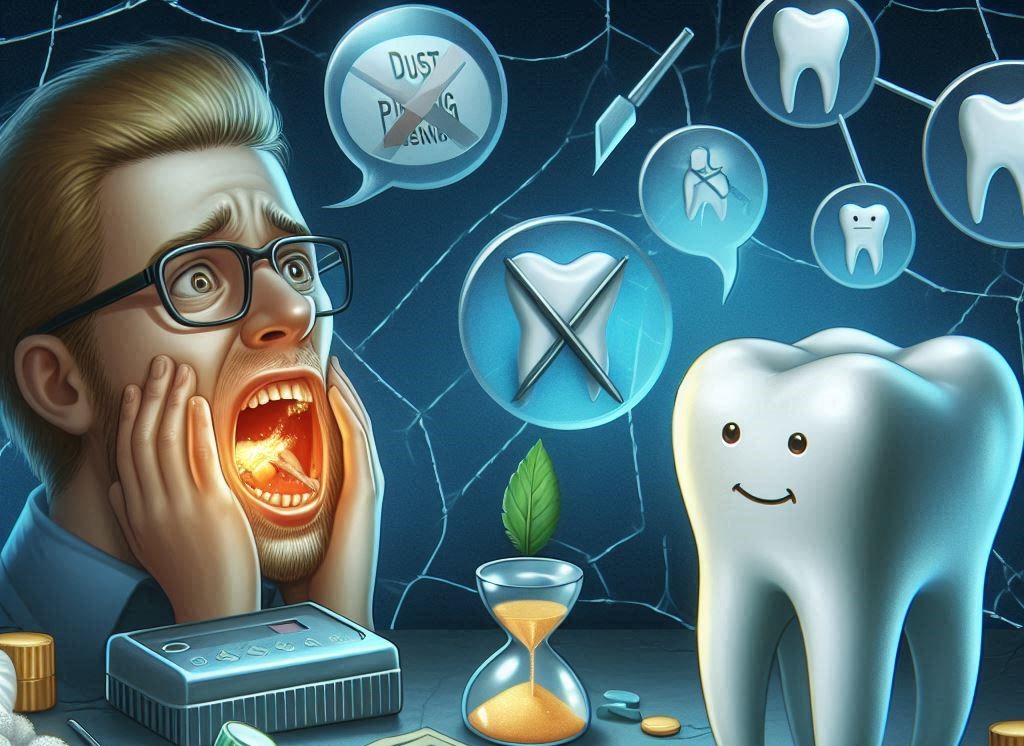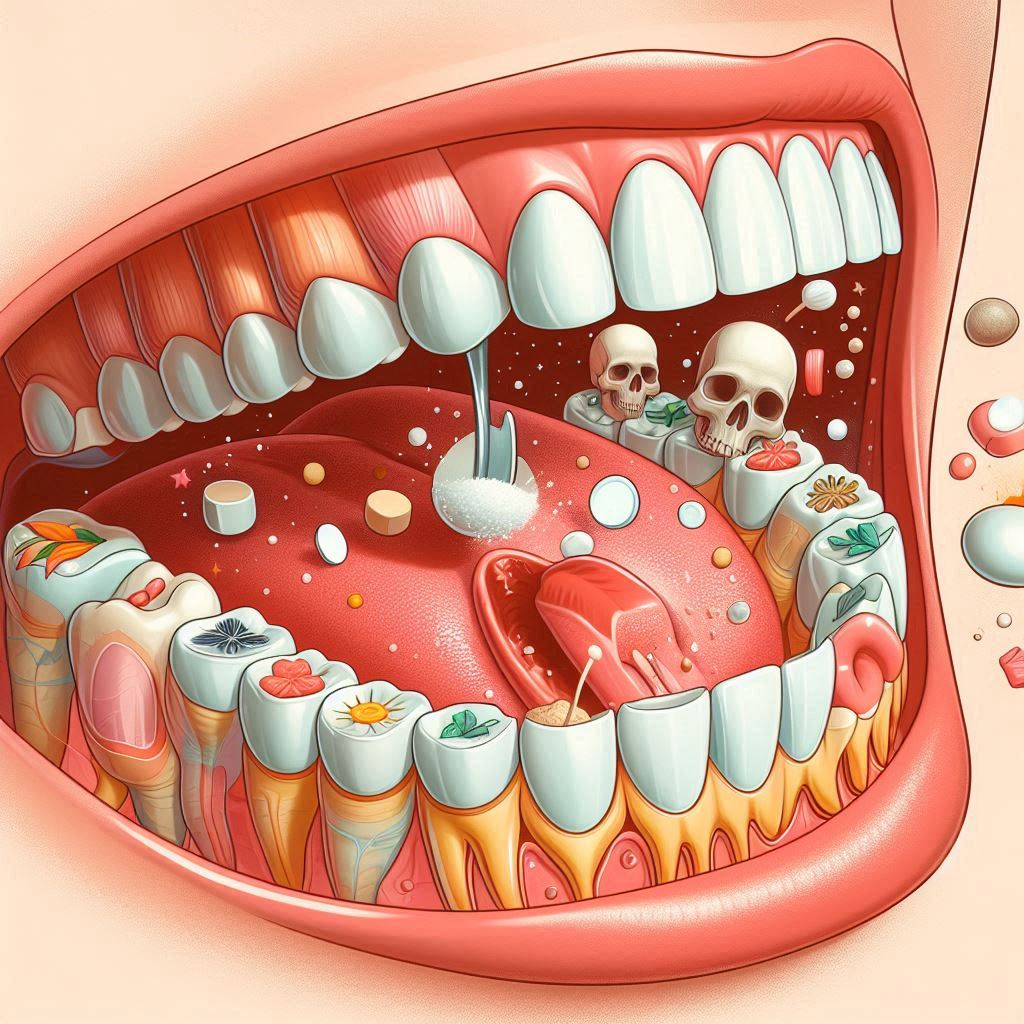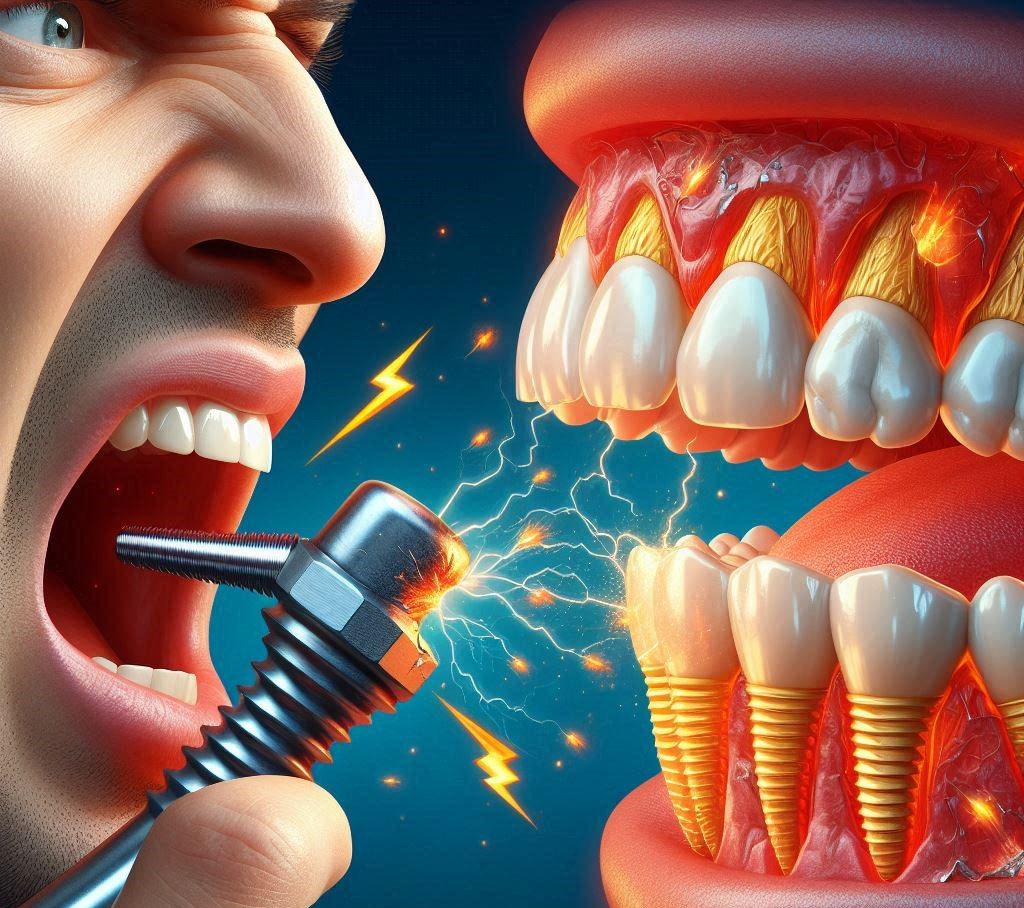Dental cavities are one of the most common and preventable oral health problems that people face, yet they remain a serious concern. Dental caries, also known as cavities or tooth decay, are caused by the destruction of tooth enamel due to the action of acids produced by bacteria in the mouth. If cavities are left untreated, they can lead to more severe oral and overall health issues. The process of decay starts slowly and may be painless at first, making it easy to ignore or underestimate its importance. However, failing to address a cavity promptly can lead to irreversible damage, including tooth loss, infection, and even systemic health problems.
In this article, we will examine the process of cavity formation, the importance of filling cavities promptly, the risks of delaying treatment, and the long-term consequences of untreated dental decay. By the end, you will have a comprehensive understanding of why timely fillings are crucial to maintaining both your oral health and overall well-being.
Understanding the Formation of Cavities
To fully appreciate why it’s critical to fill cavities promptly, it’s essential to understand how they form and how the process of decay works. The formation of cavities begins with the accumulation of plaque on the surface of your teeth. Plaque is a sticky, colorless film of bacteria that naturally forms on teeth when food particles, especially sugars and starches, mix with the bacteria in your mouth. Over time, if plaque is not removed through regular brushing and flossing, the bacteria in plaque start to produce acids.
These acids can erode tooth enamel, which is the hard, protective outer layer of the tooth. This process is known as demineralization. When enamel is exposed to acid over extended periods, it begins to weaken and break down. The first visible sign of decay is usually a small, white spot on the tooth, indicating that enamel has started to lose its minerals.
If the plaque and acid attack continue without intervention, the decay progresses deeper into the tooth, breaking through the enamel and exposing the softer, more vulnerable dentin layer underneath. This stage is where cavities truly begin to form. At this point, the tooth is no longer capable of repairing itself, and intervention is necessary to prevent further damage.
When decay reaches the dentin, the cavity grows larger, and bacteria are able to penetrate deeper into the tooth. If left untreated, the decay can reach the pulp of the tooth, which contains blood vessels and nerves. Once this happens, the risk of infection and severe pain significantly increases, as bacteria can spread to the root of the tooth and surrounding tissues. This is why it’s important to address cavities early—before they progress to this point.
The Role of Fillings in Treating Cavities
Fillings are the most common treatment for cavities. When a cavity forms, a dentist will typically remove the decayed portion of the tooth and replace it with a filling material. Fillings serve several essential purposes: they stop the decay from progressing, restore the tooth’s function and shape, and prevent future damage to the tooth.
There are various types of filling materials available, including silver amalgam, tooth-colored composite resins, gold, and porcelain. Each material has its pros and cons, but all types are designed to restore the integrity of the tooth. The filling process itself is relatively simple, and many people are able to return to normal activities immediately following the procedure.
One of the main reasons fillings are so important is that they stop the spread of bacteria into deeper parts of the tooth. As soon as the decayed tissue is removed and the cavity is filled, the risk of infection is significantly reduced. Moreover, fillings help restore the natural contours of the tooth, which is critical for chewing, speaking, and maintaining overall oral health.
The Importance of Timely Fillings
While cavities may start small and not be painful at first, ignoring them can have serious consequences. Timely fillings are crucial for the following reasons:
Prevention of Further Decay
The primary benefit of filling a cavity promptly is that it stops the decay process and prevents further damage to the tooth. When you neglect a cavity, the decay can continue to spread deeper into the tooth, making the problem worse over time. This not only compromises the structural integrity of the tooth but can lead to the need for more invasive and costly procedures, such as root canals or crowns.
A timely filling prevents this progression by sealing the decayed area and protecting the tooth from further bacterial invasion. The filling essentially acts as a barrier, safeguarding the tooth from acids, plaque, and bacteria that would otherwise continue to destroy it.
Prevention of Pain and Sensitivity
Early-stage cavities typically do not cause significant pain or discomfort. However, as the decay advances, the tooth may begin to hurt, especially when consuming hot, cold, or sweet foods. In many cases, untreated cavities lead to tooth sensitivity or more severe pain when chewing. This happens because the decay has affected the inner layers of the tooth, including the dentin and potentially the pulp.
When a dentist places a filling early on, they prevent the decay from reaching this painful stage. Fillings are highly effective in eliminating the discomfort caused by sensitivity and can help you maintain your ability to eat and drink without pain. If a cavity is left untreated and pain sets in, the procedure to address the issue may become more complex and invasive, often requiring a root canal or extraction.
Preservation of Tooth Structure
Tooth decay weakens the tooth’s structure, and as the cavity progresses, the tooth becomes more brittle and fragile. A filling restores the tooth’s strength and stability by filling the hollowed-out area caused by the decay. Without a filling, the weakened tooth is more likely to crack, break, or fracture, leading to tooth loss.
By filling the cavity early, you preserve the tooth’s overall structure, which is vital for its function. Preserving natural teeth is preferable to tooth extraction because it allows you to avoid the need for more invasive procedures, such as dental implants, bridges, or dentures, which can be costly and time-consuming.
Prevention of Infection and Abscesses
Once the decay reaches the tooth pulp, there is a high risk of infection, which can lead to the formation of a dental abscess. An abscess is a pocket of pus that forms at the root of an infected tooth. It is typically very painful and may lead to swelling, fever, and difficulty swallowing. If left untreated, an abscess can spread to surrounding tissues, and the infection may even enter the bloodstream, causing more severe systemic health problems.
Timely fillings prevent this situation by sealing off the decayed area and protecting the pulp from bacterial invasion. This helps avoid the painful and potentially dangerous complications that can arise from untreated infections.
Avoiding Tooth Loss
One of the most significant risks of ignoring a cavity is the eventual loss of the affected tooth. As decay progresses, the tooth becomes so weakened that it may no longer be salvageable. If the decay reaches the pulp, the tooth may require a root canal or extraction. If a tooth is extracted, it can have a profound effect on your oral health. Missing teeth can impair your ability to chew, speak, and smile confidently.
By addressing cavities early with fillings, you preserve your natural teeth, avoiding the need for more invasive procedures like extractions or implants. Timely fillings are much less costly and less traumatic than tooth extraction and replacement, making them a wise choice in the long run.
The Risks of Ignoring a Cavity
When cavities are ignored, they can result in severe and potentially irreversible consequences. Let’s explore some of the risks associated with neglecting dental cavities:
Increased Risk of Gum Disease
Cavities do not only affect the teeth themselves; they can also contribute to gum disease. As the decay spreads, bacteria can travel beneath the gums, causing irritation, inflammation, and infection. This can result in gingivitis, the early stage of gum disease, or more severe conditions like periodontitis, which can lead to gum recession, bone loss, and even tooth loss.
By filling cavities promptly, you reduce the likelihood of bacteria spreading to the gums and contributing to the development of gum disease. Regular dental visits and fillings can help maintain both your teeth and gums in optimal health.
Compromised Overall Health
The relationship between oral health and overall health has been well established in recent years. Poor oral hygiene, untreated cavities, and dental infections have been linked to various systemic health conditions, including heart disease, diabetes, respiratory infections, and even pregnancy complications. When cavities are left untreated, bacteria can enter the bloodstream through the infected tooth or gums, contributing to inflammation and increasing the risk of these serious health problems.
Timely fillings not only protect your teeth but also reduce the risk of these broader health issues. By keeping your oral health in check, you are taking proactive steps to safeguard your overall well-being.
Higher Treatment Costs
One of the most significant drawbacks of delaying dental care is the increased cost of treatment. While a simple filling is typically affordable and straightforward, ignoring a cavity can lead to more complicated and expensive procedures down the line. For example, if a cavity is left untreated for too long, it may require a root canal, which is more time-consuming and costly than a filling. In extreme cases, tooth extraction may be necessary, followed by the cost of a dental implant, bridge, or denture.
By filling cavities early, you prevent the need for these more expensive treatments and save both time and money in the long term.
Cosmetic Concerns
Cavities, especially when they are located in visible areas, can affect the appearance of your teeth. As decay progresses, it can cause visible holes or dark spots on your teeth, which can be embarrassing and may affect your self-confidence.
Prompt fillings restore the tooth’s appearance, making it look natural and healthy. In the case of fillings made from tooth-colored composite materials, the filling can blend seamlessly with the surrounding tooth structure, making it nearly invisible.
Long-Term Consequences of Untreated Cavities
If cavities are ignored for long enough, they can have severe consequences that affect not just your oral health, but your overall health and quality of life. Some of the long-term risks include:
- Permanent Tooth Loss: As cavities progress, the tooth may become so damaged that it is beyond repair. In such cases, the tooth must be extracted. Tooth loss can cause significant challenges, including difficulty eating, speaking, and even breathing. Moreover, missing teeth can affect the alignment of the remaining teeth, leading to additional dental problems.
- Systemic Health Issues: Untreated infections from cavities can spread beyond the mouth, affecting other parts of the body. Bacteria from a tooth infection can enter the bloodstream, leading to conditions such as endocarditis (infection of the heart valves) or complications in diabetes management.
- Increased Risk of Additional Decay: When a cavity is left untreated, the bacteria that caused the decay continue to thrive, increasing the likelihood of new cavities forming. One untreated cavity can set off a domino effect, leading to more extensive oral health issues.
- Quality of Life Decline: Tooth pain, infection, and tooth loss can severely impact your quality of life. Whether it’s chronic discomfort, difficulty chewing, or embarrassment about your smile, untreated cavities can lead to ongoing issues that affect your daily life.
Conclusion
The risks of ignoring a cavity are far-reaching and can result in significant long-term consequences. Timely fillings not only prevent the spread of decay, but also preserve tooth structure, avoid pain and infection, and maintain your overall health. The process of filling a cavity is quick, relatively inexpensive, and non-invasive. By addressing cavities promptly, you safeguard your oral health, save money, and avoid the need for more complex and costly dental procedures down the road.
Remember, regular dental checkups and good oral hygiene are key to preventing cavities from forming in the first place. But if you do notice signs of a cavity, such as pain, sensitivity, or visible holes in your teeth, don’t delay in seeking treatment. The sooner you fill a cavity, the better your chances of maintaining a healthy, functional, and beautiful smile for years to come.
SOURCES
American Dental Association (ADA). 2018. Dental fillings: Types of fillings. American Dental Association.
Avenell, A., Brough, J., Fowler, S., Burgess, C., Nimmo, M., Kennedy, B., & Freeman, C.. 2013. A systematic review of dental restorations: Effects of dental restorations on health outcomes. The Cochrane Database of Systematic Reviews, 5(1), 25-36.
Bader, J. D., & Rozier, R. G.. 2017. Preventing caries: Evidence for prevention and recommendations for oral health care professionals. Journal of the American Dental Association, 148(10), 705-711.
Brennan, M. T., Griggs, J. A., & Miller, C. S.. 2017. The role of diet in dental caries and periodontal disease. Journal of Clinical Dentistry, 28(4), 157-161.
Dewhirst, F. E., Chen, T., Simmons, A. M., & Liu, Y.. 2010. The human oral microbiome. Journal of Bacteriology, 192(19), 5009-5019.
Fejerskov, O., Manji, F., & Marthaler, T. M.. 2012. The prevention of dental caries: From early childhood to adulthood. Community Dentistry and Oral Epidemiology, 40(6), 481-489.
Kreisler, M., Köhler, B., Gorres, B., & Klinger, P.. 2008. Conservative treatment of dental caries: An evidence-based approach. European Journal of Oral Sciences, 116(1), 34-42.
Lynch, C. D., & Fitzpatrick, R. D.. 2013. Dental restorations: Materials, processes, and longevity. Dental Materials, 29(4), 421-426.
Nakamoto, T., & Kikuchi, M.. 2017. The role of dental fillings in the prevention of dental decay. International Journal of Oral Science, 9(2), 71-75.
Tinanoff, N., & Burt, B. A.. 2017. Caries risk assessment in children and adults. Pediatric Dentistry, 39(1), 35-42.
Wang, Y., Lu, Y., & Li, C.. 2016. Cavity formation in teeth: A comprehensive review of clinical and laboratory studies. Journal of Dentistry, 44, 1-9.
HISTORY
Current Version
February 27, 2025
Written By:
SUMMIYAH MAHMOOD




